Showing Spotlights 1449 - 1456 of 2780 in category All (newest first):
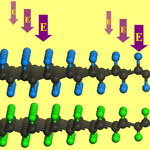 Researchers are putting great efforts into developing techniques to integrate graphene into nanoelectronic devices. Unfortunately, graphene has no band gap - a critical prerequisite for transistors - which essentially restricts its wider applications in nanoelectronics. Among the various techniques developed toward introducing a bandgap in graphene, hydrogenation or fluorination can efficiently solve this problem as they can open a considerable energy gap in the band structure of graphene. However, the experimentally realized fully hydrogenated and fluorinated graphene - namely graphane and fluorographene, respectively - both have a very large energy gap, which constrains their applications in electronics. Thus at present an urgent task is to find a feasible way which could reduce the energy gap of graphane or fluorographene into a desirable range. In new work, researchers have now demonstrated theoretically, using density functional theory computations, that graphane and fluorographene can be paired together through the C-H���F-C hydrogen bonds.
Researchers are putting great efforts into developing techniques to integrate graphene into nanoelectronic devices. Unfortunately, graphene has no band gap - a critical prerequisite for transistors - which essentially restricts its wider applications in nanoelectronics. Among the various techniques developed toward introducing a bandgap in graphene, hydrogenation or fluorination can efficiently solve this problem as they can open a considerable energy gap in the band structure of graphene. However, the experimentally realized fully hydrogenated and fluorinated graphene - namely graphane and fluorographene, respectively - both have a very large energy gap, which constrains their applications in electronics. Thus at present an urgent task is to find a feasible way which could reduce the energy gap of graphane or fluorographene into a desirable range. In new work, researchers have now demonstrated theoretically, using density functional theory computations, that graphane and fluorographene can be paired together through the C-H���F-C hydrogen bonds.
Jul 27th, 2012
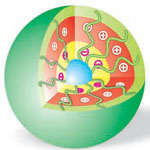 A major obstacle in today's chemical cancer therapies is to achieve specific drug accumulation at tumor sites and even tumor cells, because most chemotherapeutic agents are insoluble and instable, and can not differentiate between diseased and healthy cells. This often leads to severe adverse effects on healthy tissues and limits the maximum dose that can safely administered to patients. This issue becomes more serious in the case of some highly effective therapeutic agents, given that most potent anticancer drugs exhibit acute toxicity and narrow therapeutic window, and the clinical utility may not be possible without a powerful delivery systems equipped with smart properties that can allow them to precisely access the target tissues and cells. Targeted delivery approaches using nanomedicines will be able to provide solutions to these problems.
A major obstacle in today's chemical cancer therapies is to achieve specific drug accumulation at tumor sites and even tumor cells, because most chemotherapeutic agents are insoluble and instable, and can not differentiate between diseased and healthy cells. This often leads to severe adverse effects on healthy tissues and limits the maximum dose that can safely administered to patients. This issue becomes more serious in the case of some highly effective therapeutic agents, given that most potent anticancer drugs exhibit acute toxicity and narrow therapeutic window, and the clinical utility may not be possible without a powerful delivery systems equipped with smart properties that can allow them to precisely access the target tissues and cells. Targeted delivery approaches using nanomedicines will be able to provide solutions to these problems.
Jul 25th, 2012
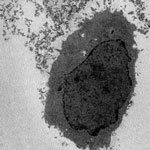 When a nanomaterial enters a physiological environment, it often adsorbs suspended biomolecules including proteins, lipids, small molecules, saccharides, and nucleic acids. These biomolecules define a new interface between the nanomaterial and its surroundings that mediates cellular association and response. In a recent article appearing in ACS Nano, Drs. Anna Salvati, Kenneth Dawson, and their colleagues at the University College in Dublin, Ireland, show that if nanoparticles are exposed directly to cells in the absence of suspended biomolecules, the nanoparticles will extract biomolecules from cells themselves. These findings suggest that in vitro toxicological or cell uptake studies performed in the absence of added serum may not be relevant in vivo.
When a nanomaterial enters a physiological environment, it often adsorbs suspended biomolecules including proteins, lipids, small molecules, saccharides, and nucleic acids. These biomolecules define a new interface between the nanomaterial and its surroundings that mediates cellular association and response. In a recent article appearing in ACS Nano, Drs. Anna Salvati, Kenneth Dawson, and their colleagues at the University College in Dublin, Ireland, show that if nanoparticles are exposed directly to cells in the absence of suspended biomolecules, the nanoparticles will extract biomolecules from cells themselves. These findings suggest that in vitro toxicological or cell uptake studies performed in the absence of added serum may not be relevant in vivo.
Jul 24th, 2012
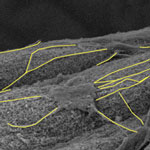 Carbon nanotubes, like the nervous cells of our brain, are excellent electrical signal conductors and can form intimate mechanical contacts with cellular membranes, thereby establishing a functional link to neuronal structures. There is a growing body of research on using nanomaterials in neural engineering. This emerging field of 'nanoneuroscience' explores and utilizes the potential of carbon nanotubes (CNTs) for fabricating durable, robust substrates, scaffolds and interfacing devices that change how researchers approach neuroscience. One area of neuron-CNT interaction that is now being probed is the effect of CNTs on neural stem cells. In new work by a team of scientists from Taiwan, it was found that electrical stimulation significantly promotes the early differentiation and maturation of neural stem cells.
Carbon nanotubes, like the nervous cells of our brain, are excellent electrical signal conductors and can form intimate mechanical contacts with cellular membranes, thereby establishing a functional link to neuronal structures. There is a growing body of research on using nanomaterials in neural engineering. This emerging field of 'nanoneuroscience' explores and utilizes the potential of carbon nanotubes (CNTs) for fabricating durable, robust substrates, scaffolds and interfacing devices that change how researchers approach neuroscience. One area of neuron-CNT interaction that is now being probed is the effect of CNTs on neural stem cells. In new work by a team of scientists from Taiwan, it was found that electrical stimulation significantly promotes the early differentiation and maturation of neural stem cells.
Jul 23rd, 2012
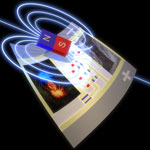 Printed electronics has emerged as a key research field to meet the requirements of large area and cost-efficient production. The field of modern electronics is very general and includes not only printable interconnects, but also optoelectronics and magnetoelectronics. In this respect, cost-efficient versatile electronic building blocks, such as transistors, diodes and resistors, are already available as printed counterparts of conventional semiconductor elements. However, the element responding to a magnetic field, which is highly demanded for printable electronics, has not yet been realized and printable electronic sensors and contactless switches operating in combination with magnetic fields have not been reported so far. In new work, researchers in Germany have successfully overcome most of these issues. Researchers have now fabricated the first printable magnetic sensor that relies on the giant magnetoresistance (GMR) effect. The developed magneto-sensitive ink can be painted on any substrate - such as paper, polymers, ceramics, and glass - and retains a GMR ratio of up to 8% at ambient conditions. This value is beyond the state of the art.
Printed electronics has emerged as a key research field to meet the requirements of large area and cost-efficient production. The field of modern electronics is very general and includes not only printable interconnects, but also optoelectronics and magnetoelectronics. In this respect, cost-efficient versatile electronic building blocks, such as transistors, diodes and resistors, are already available as printed counterparts of conventional semiconductor elements. However, the element responding to a magnetic field, which is highly demanded for printable electronics, has not yet been realized and printable electronic sensors and contactless switches operating in combination with magnetic fields have not been reported so far. In new work, researchers in Germany have successfully overcome most of these issues. Researchers have now fabricated the first printable magnetic sensor that relies on the giant magnetoresistance (GMR) effect. The developed magneto-sensitive ink can be painted on any substrate - such as paper, polymers, ceramics, and glass - and retains a GMR ratio of up to 8% at ambient conditions. This value is beyond the state of the art.
Jul 19th, 2012
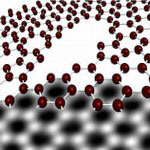 Although graphene in itself has been dubbed the 'magic' material, if it is to be used for practical applications it has to integrated with the other components of possible devices. For instance, to exploit its amazing electron conduction properties, you still need to connect it to the rest of the circuit with contacts, which are typically made out of metal. Understanding how metals interact - chemically and structurally - with graphene is therefore quite important and researchers have published a number of studies on the subject. In a quite unexpected discovery resulting from these observations, researchers have now found that graphene undergoes a self-repairing process to close holes that are caused by metal atoms. They were able to show that nanoscale holes (perhaps a 100 atoms missing or so), etched under an electron beam at room temperature in single-layer graphene sheets as a result of their interaction with metal impurities, heal spontaneously by filling up with either nonhexagon, graphene-like, or perfect hexagon 2D structures.
Although graphene in itself has been dubbed the 'magic' material, if it is to be used for practical applications it has to integrated with the other components of possible devices. For instance, to exploit its amazing electron conduction properties, you still need to connect it to the rest of the circuit with contacts, which are typically made out of metal. Understanding how metals interact - chemically and structurally - with graphene is therefore quite important and researchers have published a number of studies on the subject. In a quite unexpected discovery resulting from these observations, researchers have now found that graphene undergoes a self-repairing process to close holes that are caused by metal atoms. They were able to show that nanoscale holes (perhaps a 100 atoms missing or so), etched under an electron beam at room temperature in single-layer graphene sheets as a result of their interaction with metal impurities, heal spontaneously by filling up with either nonhexagon, graphene-like, or perfect hexagon 2D structures.
Jul 18th, 2012
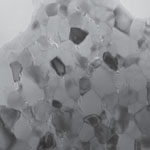 In recent years, there has been growing interest, and progress, in the design and fabrication of carbon nanotube (CNT) macrostructures for effective utilization of their remarkable properties at the macroscale. Realization of such highly concentrated CNT macrostructures in a stiff/elastic environment able to impose compression on individual CNTs and CNT/CNT junctions, could dramatically improve their network connectivity, transport property, and durability, and perhaps lead to novel organic/inorganic hybrids with unprecedented multifunctional properties. In a new study, researchers have effectively addressed this challenge and proposed a new concept - a highly concentrated, 3D macrostructure of individual multiwalled CNTs in a ceramic environment - that dramatically improves not only the transport property and network connectivity of the MWCNT 3D macrostructure but also the strain tolerance of the ceramic material.
In recent years, there has been growing interest, and progress, in the design and fabrication of carbon nanotube (CNT) macrostructures for effective utilization of their remarkable properties at the macroscale. Realization of such highly concentrated CNT macrostructures in a stiff/elastic environment able to impose compression on individual CNTs and CNT/CNT junctions, could dramatically improve their network connectivity, transport property, and durability, and perhaps lead to novel organic/inorganic hybrids with unprecedented multifunctional properties. In a new study, researchers have effectively addressed this challenge and proposed a new concept - a highly concentrated, 3D macrostructure of individual multiwalled CNTs in a ceramic environment - that dramatically improves not only the transport property and network connectivity of the MWCNT 3D macrostructure but also the strain tolerance of the ceramic material.
Jul 17th, 2012
 There is currently no clear evidence that engineered nanoparticles pose a significant threat to the environment. Nonetheless, major gaps in our knowledge exist. The present dossier illustrates the problems in the field of environmental analytics, presents the current state of knowledge on the fate and behavior of ENPs in various environmental compartments and provides an overview of the preliminary results from ecotoxicological research and from model calculations of exposure assessments. At present, ecotoxicological research focuses primarily on controlled laboratory studies involving cell cultures or model organisms. One of the major critiques here is the use of unrealistically high dosages1 Overall, no definitive conclusions can be drawn on whether environmental damage can be expected or not.
There is currently no clear evidence that engineered nanoparticles pose a significant threat to the environment. Nonetheless, major gaps in our knowledge exist. The present dossier illustrates the problems in the field of environmental analytics, presents the current state of knowledge on the fate and behavior of ENPs in various environmental compartments and provides an overview of the preliminary results from ecotoxicological research and from model calculations of exposure assessments. At present, ecotoxicological research focuses primarily on controlled laboratory studies involving cell cultures or model organisms. One of the major critiques here is the use of unrealistically high dosages1 Overall, no definitive conclusions can be drawn on whether environmental damage can be expected or not.
Jul 12th, 2012
 Researchers are putting great efforts into developing techniques to integrate graphene into nanoelectronic devices. Unfortunately, graphene has no band gap - a critical prerequisite for transistors - which essentially restricts its wider applications in nanoelectronics. Among the various techniques developed toward introducing a bandgap in graphene, hydrogenation or fluorination can efficiently solve this problem as they can open a considerable energy gap in the band structure of graphene. However, the experimentally realized fully hydrogenated and fluorinated graphene - namely graphane and fluorographene, respectively - both have a very large energy gap, which constrains their applications in electronics. Thus at present an urgent task is to find a feasible way which could reduce the energy gap of graphane or fluorographene into a desirable range. In new work, researchers have now demonstrated theoretically, using density functional theory computations, that graphane and fluorographene can be paired together through the C-H���F-C hydrogen bonds.
Researchers are putting great efforts into developing techniques to integrate graphene into nanoelectronic devices. Unfortunately, graphene has no band gap - a critical prerequisite for transistors - which essentially restricts its wider applications in nanoelectronics. Among the various techniques developed toward introducing a bandgap in graphene, hydrogenation or fluorination can efficiently solve this problem as they can open a considerable energy gap in the band structure of graphene. However, the experimentally realized fully hydrogenated and fluorinated graphene - namely graphane and fluorographene, respectively - both have a very large energy gap, which constrains their applications in electronics. Thus at present an urgent task is to find a feasible way which could reduce the energy gap of graphane or fluorographene into a desirable range. In new work, researchers have now demonstrated theoretically, using density functional theory computations, that graphane and fluorographene can be paired together through the C-H���F-C hydrogen bonds.
 Subscribe to our Nanotechnology Spotlight feed
Subscribe to our Nanotechnology Spotlight feed





